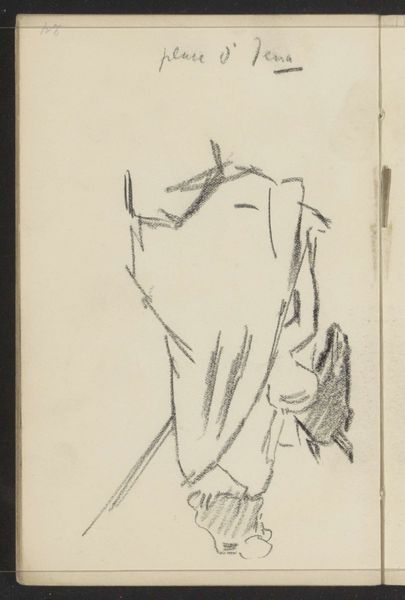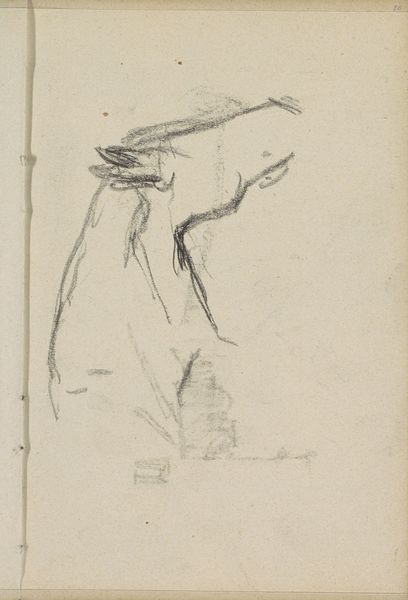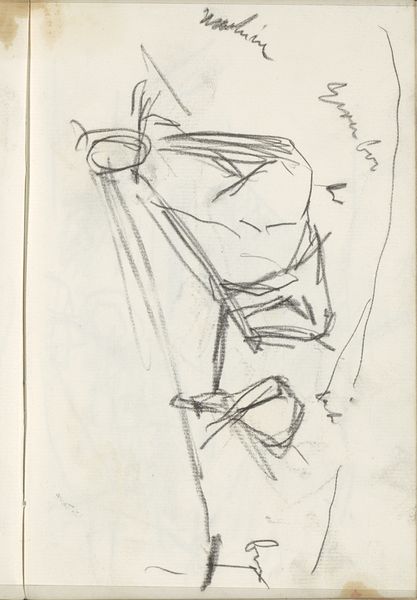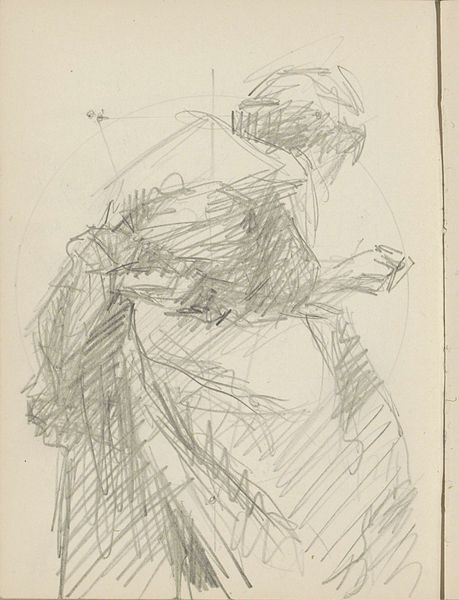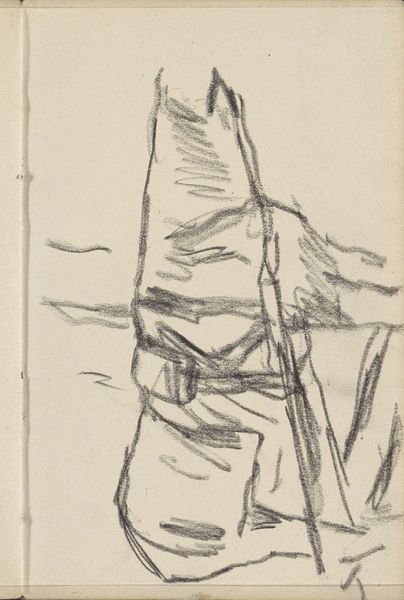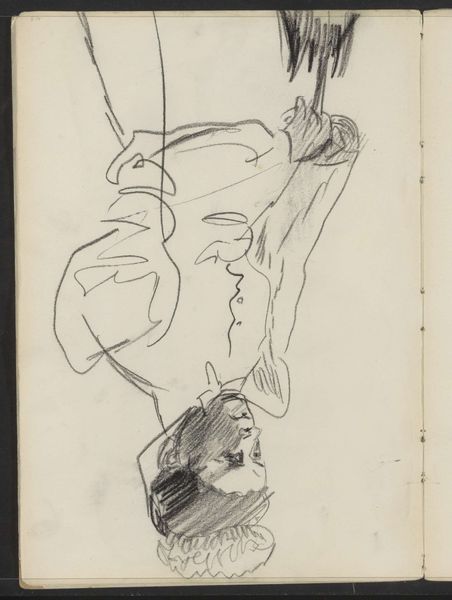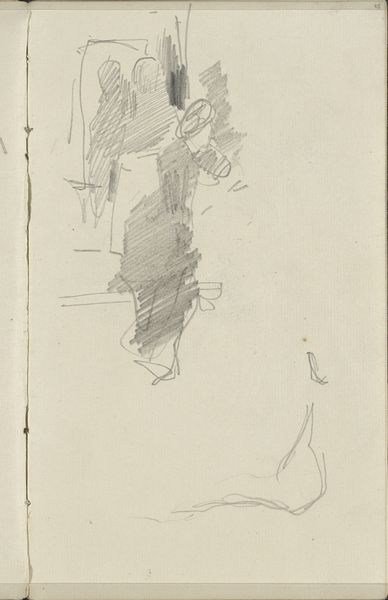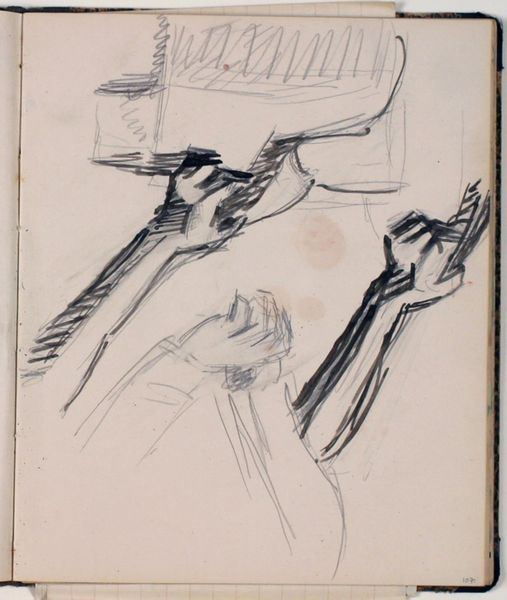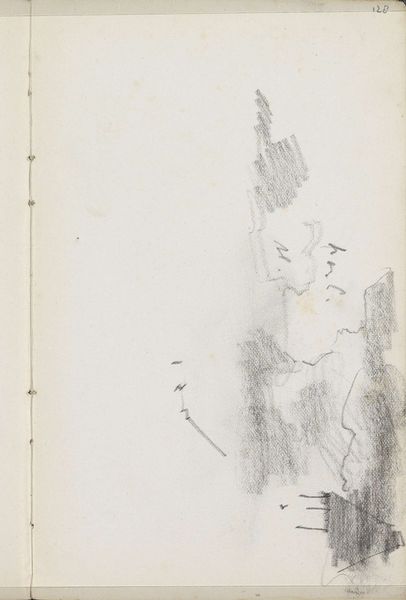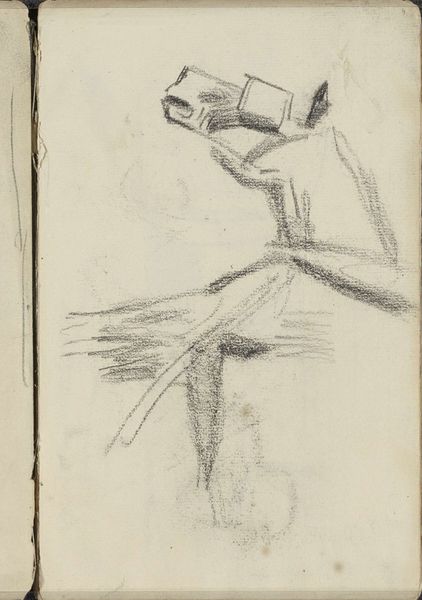
drawing, pencil
#
portrait
#
drawing
#
figuration
#
pencil
#
realism
Copyright: Rijks Museum: Open Domain
Curator: Before us is “Head of a Woman and Crossed Feet,” a pencil drawing made circa 1916. It’s currently held at the Rijksmuseum. What are your first impressions? Editor: It's a bit unnerving, actually. The cropping, the sketchiness...the way the feet dominate the composition almost obscuring the head, it gives a feeling of unease and… perhaps even exhaustion. Curator: The seemingly random combination is quite typical of the artist. Let's think about the context. This was a period marked by profound social and political upheaval during WWI. Editor: And this is precisely where the materiality and production come into play. The choice of pencil—a readily available, inexpensive material—speaks volumes. It suggests a practice rooted in immediacy. This artwork moves beyond a straightforward portrayal; its materiality underscores a time of uncertainty and scarce resources. It suggests a rapid way of sketching, of taking notes. Curator: Precisely, there’s something intensely personal about it, yet detached at the same time. It challenges traditional notions of portraiture and representation and provokes dialogues around objectification. We're not invited into an intimate space of connection, instead we are pushed away and left only with disjointed aspects, a woman, yes, but rendered anonymously through the fragment of a head, feet. It mirrors the fragmentation and alienation of the self and the female body during wartime. Editor: Absolutely. And the stark contrast of light and shadow enhances this fragmented feeling. The sharp, angular lines describing the feet and head communicate a tactile sense of hardship and a raw sensibility towards the human condition in a period of widespread suffering and uncertainty. Curator: These artworks invite crucial contemporary discourses about the portrayal of women, the female body, and their intersection with themes of labor, class, and wartime identity, resonating beyond art historical frames. Editor: By attending to these materials, and production means, the object gains depth and a visceral quality tied intimately to social history, resonating within contemporary debates. Curator: I appreciate how it allows us to contemplate broader social questions of representation and subjectivities, echoing the political, economic, and the aesthetic of art itself. Editor: Indeed. A simple drawing—when carefully observed for material and historical details—offers multifaceted social meaning far beyond its lines.
Comments
No comments
Be the first to comment and join the conversation on the ultimate creative platform.
